LabVIEW Tutorial: How to Use LabVIEW for Data Acquisition and Analysis
LabVIEW is a powerful software tool that allows users to acquire, analyze, and visualize data in real time. With LabVIEW, users can quickly and easily create custom programs to acquire data from sensors and instruments, analyze the data, and display the results in a way that is easy to understand. This LabVIEW tutorial will provide a basic overview of the software, and demonstrate how to use it for data acquisition and analysis.
What Is LabVIEW?
LabVIEW (Laboratory Virtual Instrument Engineering Workbench) is a graphical programming language developed by National Instruments. It is used for data acquisition, instrument control, and automation. LabVIEW is used in a variety of industries, including aerospace, automotive, medical, and scientific research.
LabVIEW is a visual programming language, which means that instead of writing code, users create graphical representations of their programs. This makes it easy to understand and debug programs. LabVIEW also has a wide range of built-in libraries that can be used to quickly and easily create custom programs.
Getting Started With LabVIEW
Before you can start creating programs with LabVIEW, you will need to install the software and become familiar with the user interface. LabVIEW is available for Windows, Mac, and Linux. Once the software is installed, you can open the LabVIEW environment and start creating programs.
The LabVIEW environment consists of the following components:
- The Project Explorer: This is where you can view and manage your LabVIEW projects.
- The Block Diagram: This is where you create and edit your LabVIEW programs.
- The Front Panel: This is where you can display and control data.
- The Tools palette: This is where you can find and use tools to create and debug programs.
Creating a Program With LabVIEW
Once you are familiar with the LabVIEW environment, you can start creating programs. LabVIEW programs are composed of blocks, which are graphical representations of code. Each block is connected to other blocks and can be used to perform a specific task. For example, a block might be used to acquire data from a sensor, or to process and analyze the data.
In order to create a program, you will need to select the appropriate blocks and connect them together. You can use the Tools palette to find the blocks you need, and the Block Diagram to connect them together. Once you have created the program, you can use the Front Panel to control and display the data.
Using LabVIEW for Data Acquisition and Analysis
Once you have created a LabVIEW program, you can use it for data acquisition and analysis. You can use the program to acquire data from sensors and instruments, process and analyze the data, and display the results in a way that is easy to understand.
You can also use LabVIEW to create interactive data visualizations. You can create custom charts and graphs to display the data in a way that is easy to understand. You can also create custom dashboards that allow you to quickly and easily monitor the data.
Conclusion
This LabVIEW tutorial has provided a basic overview of the software, and demonstrated how to use it for data acquisition and analysis. With LabVIEW, users can quickly and easily create custom programs to acquire data from sensors and instruments, analyze the data, and display the results in a way that is easy to understand.
Tags: LabVIEW, Data Acquisition, Data Analysis, Instrument Control, Automation, Visualization, Dashboards

Posting Komentar untuk "Labview Tutorial"